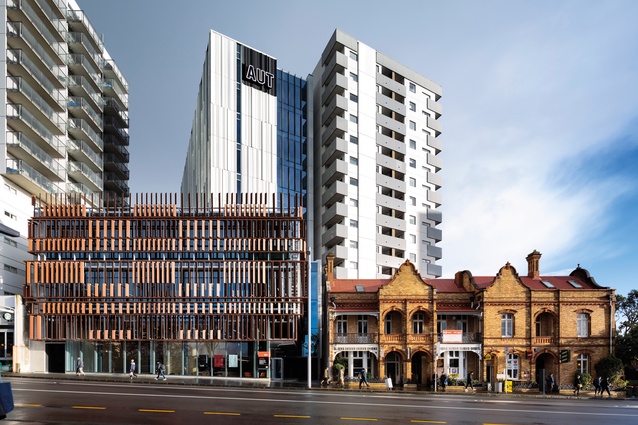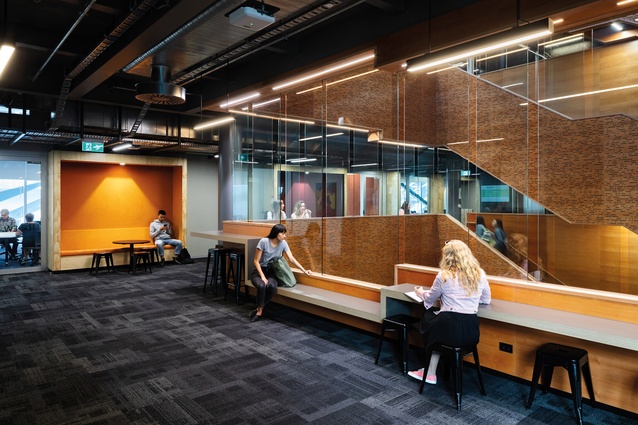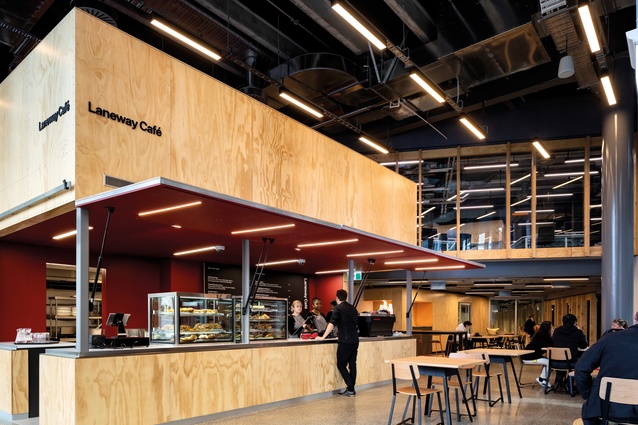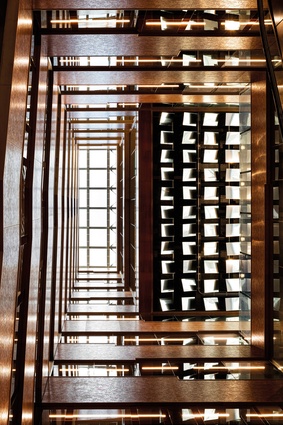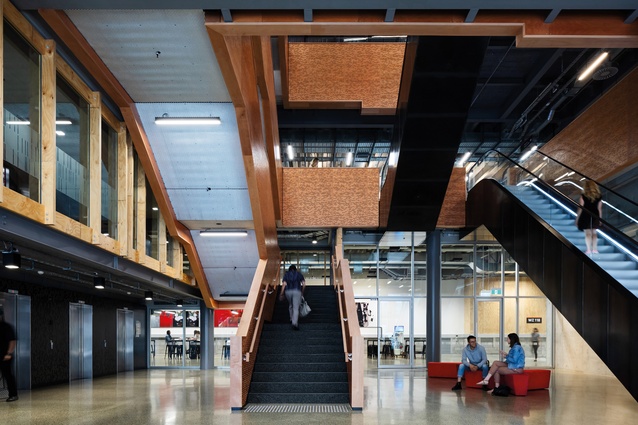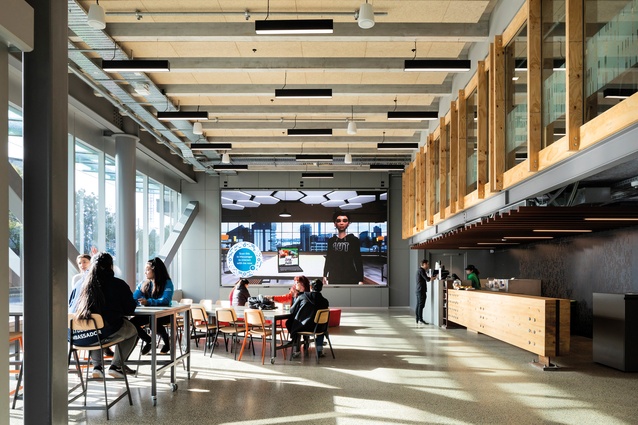Complex and generous: 2019 Ted McCoy Award for Education
With this addition to the AUT campus, Jasmax creates a ‘mega-tool’ for learning and the opportunity for greater collaboration between faculties.
Jasmax‘s project, Ngā Wai Hono AUT School of Engineering, Computer and Mathematical Sciences (ECMS) Building, was the recipiet of the Ted McCoy Award for Education at this year’s Te Kāhui Whaihanga New Zealand Institute of Architects New Zealand Architecture Awards.
The Awards’ jury said of the building, “This complex building expresses AUT’s determination to maximise the potential of a tight and convoluted urban site by successfully combining insertion with integration. The ECMS building gives AUT a definite presence on Symonds Street and achieves a welcome generosity via the impressive, light-filled common space of a 12-levelled atrium. The challenge of stitching together and linking the building with existing structures and the wider campus has been adroitly handled, and the goal of legibly demonstrating the didactic purpose of the building as a contemporary high-tech teaching and research facility has been commendably achieved.”
Jasmax project description
AUT’s aspiration was for a game-changing new environment, with the building being a hands-on learning and research tool for students of Engineering and Computer and Mathematical Sciences (ECMS). At 18,000m², the building stitches into adjacent AUT buildings creating a super-sized facility that will enable greater opportunity for collaboration between ECMS, Art and Design, and Applied Sciences. The building’s porosity creates new connectivity both within the campus and to the city, providing a new campus gateway through a laneway, café and exhibition space on Symonds Street, and a multi-purpose, double-height student and event space adjacent to the atrium on St Paul Street.
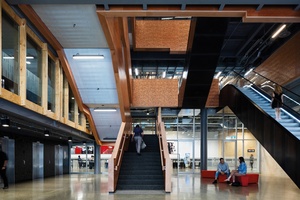
The 12-storeyed atrium is a circulation connector, social heart and thermal chimney. The spiral ribbon of timber balustrade connects social study spaces through the height of the building. The atrium ceiling has individually angled, polished stainless-steel reflectors throwing both natural and LED lighting down through the space.
The building blends a range of flexible workshops, computer learning and laboratory environments, project studios, making spaces and social collaborative learning spaces where students, staff and industry can all rub shoulders. The northern façade utilises advanced engineering and computer modelling to create a cable-tensioned, folded aluminium screen, which minimises solar heat gain and maximises daylight, while, to the east, a copper-coloured sun screen is generated from the proportions and scale of the adjacent historic red-brick Doctors’ Houses.
See all the winning projects from the 2019 New Zealand Architecture Awards here.

